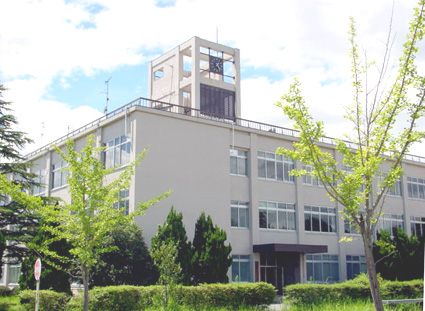
The National Institute of Technology (KOSEN), Nara College, (NITNC) was established on April 1, 1964 to foster regional industrial engineers who can contribute to the further progress of science and technology that have supported Japan's rapid economic growth. As a result of incorporation on April 1, 2004, Nara KOSEN became a subsidiary of KOSEN, an independent administrative agency. During this time, the practical engineer education that has been carried out at NITNC has produced human resources who will contribute not only to the industrial world but also to research and education, and the results have been highly evaluated. The employment rate of NITNC is extremely high compared to other educational institutions such as universities, and nearly 100% of our students are accepted by companies of their choice every year.
NITNC provides an integrated education over five years (for the regular course) and two more years (for the advanced course) in a wedge-shaped allocation of subjects in specialties, arts, and sciences. This allows students to spend more time in specialized subjects, experiments, and practical training, which gradually increases for each grade. Specialized lectures at NITNC are equivalent to the courses offered by general universities. Fifth-year students conduct research projects for their graduation thesis in small groups with the guidance of skilled professors. The students of our college are provided with the opportunity to shape their own unique characteristics and foster their creativity by being able to concentrate on making the most of their college lives without being burdened by university entrance examinations.
Japan, which has become one of the world's leading economic powers through advanced and precise manufacturing, is now at a historical crossroads. In order to survive in the complicated international economic situation, it is necessary to create a new industry that produces high-quality, low-environmental load materials and products by using new manufacturing technology without relying on imported resources. In addition, there is an urgent need to develop human resources to win the competition in the development of various technologies, such as green, digital, and quantum technologies, where international competition is intensifying. By utilizing the five-year systematic and flexible educational system of KOSEN, we can aim to develop human resources that meet the needs of society and industry. Further enrichment of advanced courses and advancement to graduate school would be effective in fostering creative engineers who will be responsible for systems that use the latest research results in technological development and create highly functional and high-performance products that have never existed before.
NITNC will celebrate its 60th anniversary next year. Aiming for further sophistication and specialization, in addition to regular engineering education, we have implemented two extracurricular education programs as projects: the Global Engineer Leadership Program, and the Female Engineer Leadership Program. This initiative is a part of our activities focused on the fact that requirements for engineers by society is changing due to the globalization of industry and the fusion and combination of technologies from different fields. Currently, as a countermeasure against the declining birthrate, efforts are required to realize diversity and inclusion (D&I), such as further globalization and promotion of diversity, and the creation of an environment where individuals can maximize their abilities. NITNC will continue to create an environment in which students can naturally recognize the importance of D&I, and provide educational opportunities where they can acquire the skills necessary for the next generation of engineer leaders, such as communication skills and situational judgment.
We appreciate your continuous understanding and support of our education and research here at NITNC.
System Features at Institutes of Technology
Post-war progress in Japan industry was so drastic that the demand for highly educated technological experts has been increasing. Now three higher educational systems exist in Japan, such as universities, junior colleges and institutes of technology. Institutes-of-Technology System, established in 1962, accepts junior high school graduates so that they have had more time to progress their professional research than any other institute.
Those students spend five years in research or design to be engineers who contribute to the development of industrial technologies. In order to achieve their aims, unique academic programs are arranged with the features of both senior high schools and universities. Besides the unique academic programs, there are enough educational facilities at the institutes, such as the library, student center, computer laboratories, technological workshops, and various other facilities for after-school activities in sports, culture, and technology as well.
With highly advanced scientific technologies, a part of the school education law was revised in April 1991 and has been in force since July 1991. Consequently, besides maintaining advanced points of the institutes, the new two-year Faculty of Advanced Engineering has been authorized by the National Institution for Academic Degrees. In April 1992, the Faculty of Advanced Engineering has been available to graduates who wish to update their knowledge and research skills to a more precise and deeper extent in specialized areas.
The National Institute of Technology(KOSEN), Nara College, has been one of the institutes with national measures since April 1, 2004.